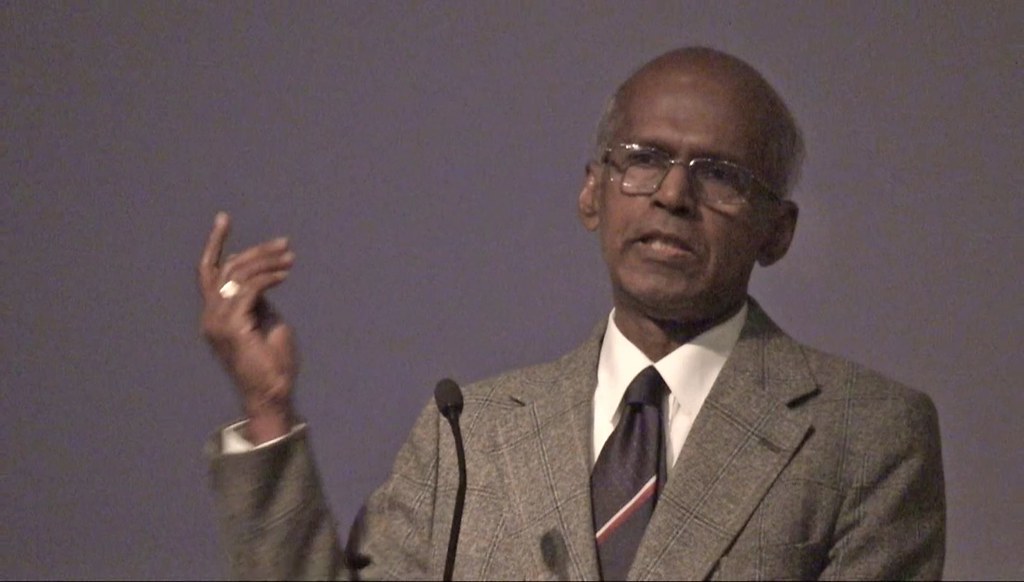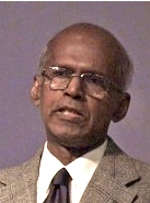
Friday, 7th March 2008
Brunei Gallery Lecture Theater
Jaina Art & Architecture
10th Jaina Studies Workshop at SOAS
South Indian Jainism: The Role of Religious Polemics in Tamil
 Lecture: "South Indian Jainism: The Role of Religious Polemics in Tamil". Prof. Alvappillai Veluppillai, University of Arizona, Tempe, USA
Lecture: "South Indian Jainism: The Role of Religious Polemics in Tamil". Prof. Alvappillai Veluppillai, University of Arizona, Tempe, USA
Prof. Alvappillai Veluppillai, University of Arizona, Tempe
Abstract:
This paper will trace the development South Indian Jainism in general and Tamil Jainism in particular, focusing on the role of religious polemics in Tamil. The relevant views of scholars like Padmanabh Jaini (1979), Paul Dundas (2002) and Peter Schalk (2002) will be examined when dealing with the survival of Jainism in South India.
Religious strife in Tamilnadu among Śaivism,Vaiṣṇavism, Jainism and Buddhism begin with the Śaiva and Vaiṣṇava bhakti movements from the 7th century CE. Śaivism was attacking Jainism most, even though there were also Saiva polemics against the other three religions. Both the Pallava and the Pandya kings had become Jains and the Śaiva saints succeeded in converting them to Śaivism. Śaivism and Vaiṣṇavism attacked Buddhism also but not to that extent. Jainism and Buddhism have not preserved their side of the story of this strife.
According to Jaini, the Rāmāyaṇa and the Mahābhārata have become so popular that the Jains had to engage in reworking of the stories as a survival strategy. In Tamilnadu, the Jains were not under much pressure because the Śaivas were keen not to glorify Rāma and Kṛṣṇa incarnations of Viṣṇu. The Śaiva Tamil bhakti poetry has allusions to the two great epics but without giving predominance to the two incarnations. The parallel Vaiṣṇava Tamil bhakti poetry deals extensively with Kṛṣṇa but not much with Rāma.
Buddhism and Jainism seem to have engaged in serious conflict from about the 10th century. Nilakeci, the anonymous Jain work, engages in virulent polemics in an onslaught on Buddhism. The author of that work justifies his work with the claim that Kuntalakeci, the Buddhist narrative poem in Tamil, was so devastating in its attacks on Jainism that he was compelled to retaliate. Nilakeci has an elaborate commentary also. A Śaiva commentator to Civagnanacittiyar, a Śaiva Siddhānta philosophical work, was using for his purpose Nilakeci’s arguments against Buddhism. Buddhism and Jainism seem to have weakened each other.
As one of its survival strategies, Jainism was adopting various measures to have some outward conformity with Śaivism and Vaiṣṇavism, without compromising its ideology. Buddhism, as a whole, does not seem to have adapted this strategy. Jain polemics against the weak Buddhism also might have been guided by this strategy to be on the good side of the Śaivas and Vaiṣṇavas. But this outward similarity is a dangerous strategy as this could have facilitated many Jains converting to Śaivism and Vaiṣṇavism also.
Extract on video:
Full SpeechAudio:
|
 Prof. Dr. Alvappillai Veluppillai
Prof. Dr. Alvappillai Veluppillai